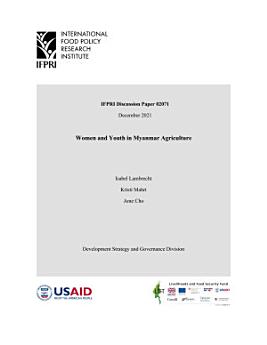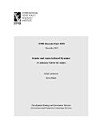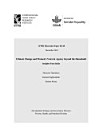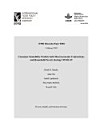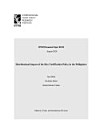Women and youth in Myanmar agriculture
Lambrecht, Isabel · Mahrt, Kristi · Cho, Ame
des. del 2021 · IFPRI Discussion Paper Llibre 1 · Intl Food Policy Res Inst
Llibre electrònic
38
Pàgines
family_home
Apte
info
reportNo es verifiquen les puntuacions ni les ressenyes Més informació
Sobre aquest llibre
Women’s and youth’s roles in agriculture vary across contexts and over time. Limited quantitative information is available on this topic from Southeast Asia in general, and particularly from Myanmar. We use nationally representative data to document women’s and youth’s involvement in agriculture in rural Myanmar. First, we show that women and youth contribute substantially to agriculture. Women in farm households perform 39 percent of household farm labour days, and 43 percent of agricultural wage workers are women. Twenty-seven percent of adults performing household agricultural work are youth and 22 percent of agricultural wage workers are youth. Yet, women’s farm wages are 29 percent lower than men’s farm wages. Youth’s farm wages are 17 percent lower than farm wages of non-youth for men, but we don’t find similar wage differences for women. Second, we find a significant gender gap in land rights, but the share of women who have land rights is still sizable. Nineteen percent of adult men are documented landowners compared to seven percent of adult women. Few youth have land rights, but the likelihood increases with age. Third, we explore cropping patterns. No crops are grown exclusively by men or women, but rice is more often and vegetables are less often cultivated by households where men are the sole agricultural decision makers. Finally, we focus on access to credit. Women receive loans less often than men (21 percent vs. 26 percent) and youth rarely receive loans (4 percent). Women’s loans are more often aimed at alleviating basic needs, such as food and health expenditures. Men’s loans are more often aimed at investment in productive activities, especially farming. The evidence suggests that including men, women and youth equally in agricultural projects and policy making is critical to advance equity and achieve development goals.
Puntua aquest llibre electrònic
Dona'ns la teva opinió.
Informació de lectura
Telèfons intel·ligents i tauletes
Instal·la l'aplicació Google Play Llibres per a Android i per a iPad i iPhone. Aquesta aplicació se sincronitza automàticament amb el compte i et permet llegir llibres en línia o sense connexió a qualsevol lloc.
Ordinadors portàtils i ordinadors de taula
Pots escoltar els audiollibres que has comprat a Google Play amb el navegador web de l'ordinador.
Lectors de llibres electrònics i altres dispositius
Per llegir en dispositius de tinta electrònica, com ara lectors de llibres electrònics Kobo, hauràs de baixar un fitxer i transferir-lo al dispositiu. Segueix les instruccions detallades del Centre d'ajuda per transferir els fitxers a lectors de llibres electrònics compatibles.
